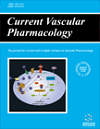
Full text loading...
We use cookies to track usage and preferences.I Understand
Diabetic foot ulcers (DFUs) pose a significant clinical challenge, characterized by impaired wound healing, chronic inflammation, and increased risk of infection. Neutrophils, as critical components of the innate immune response, play a pivotal role in the initial stages of wound healing, particularly during the inflammatory phase. This review explores the intricate relationship between neutrophil migration, inflammation, and the pathogenesis of DFU and drugs that can impact neutrophil production and migration. Neutrophils contribute to infection control through phagocytosis and release pro-inflammatory cytokines and reactive oxygen species, which, when dysregulated, can impede the wound healing process. Furthermore, the chronic hyperglycemic state characteristic of diabetes mellitus has been implicated in impairing neutrophil functions, including chemotaxis and oxidative burst. This compromised neutrophil response prolongs the inflammatory phase and disrupts the delicate balance required for efficient wound healing. Neutrophil extracellular traps (NETs), a unique form of neutrophil defence, have also been implicated in DFU pathogenesis, potentially exacerbating inflammation and tissue damage. Understanding the intricate interplay between neutrophil migration, dysregulated inflammatory responses, and hyperglycemia-driven impairments is essential for developing targeted therapeutic strategies for DFUs. This review sheds light on the critical role of neutrophils in DFU pathogenesis, and innovative and advanced treatment strategies for DFU, highlighting the potential for novel interventions to restore the balance between pro-inflammatory and wound healing processes, ultimately improving clinical outcomes for individuals with DFU.

Article metrics loading...

Full text loading...
References


Data & Media loading...

